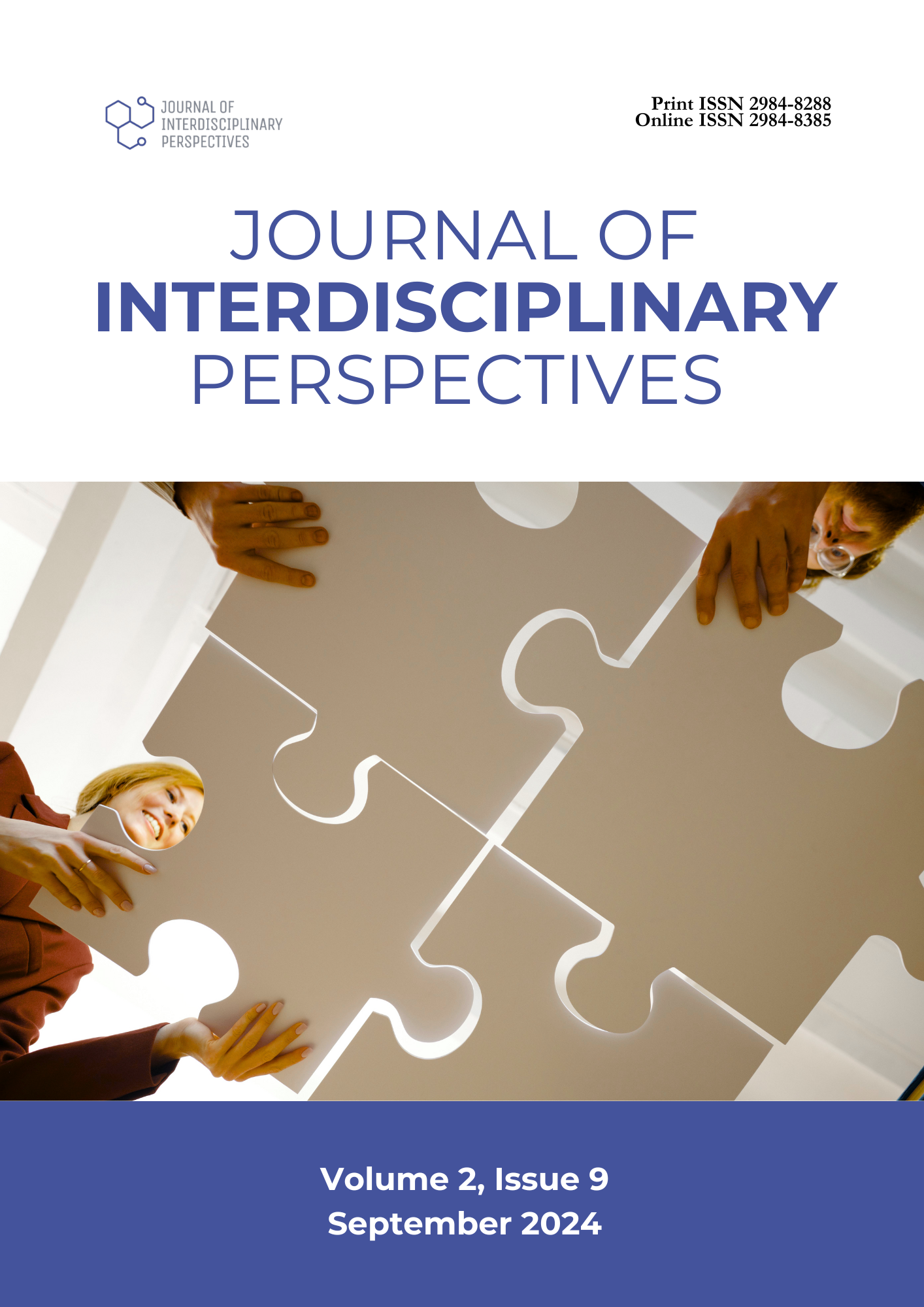Development and Implementation of Training Resource Package for School Heads
DOI:
https://doi.org/10.69569/jip.2024.0356Keywords:
Training implementation, Training evaluation, Training resource package, School heads, ADDIE model, Western VisayasAbstract
This study aimed to develop a training resource package and implement and evaluate the training program for Western Visayas school heads based on their priority competency needs, according to the Philippine Professional Standards for School Heads (PPSSH). Using the Analysis, Design, Development, Implementation, Evaluation (ADDIE) model, this descriptive developmental study identified the priority competency needs of school heads, assessed the quality of the Training Resource Package, measured participants' learning before and after the program, and evaluated their satisfaction with the training sessions, venue and accommodation, program management, and resource persons. Statistical analyses included mean and Wilcoxon Signed Rank Test with a significance level 0.05. Results showed that school heads' needs covered learning assessment, teaching standards, school planning, professional development, learner discipline, school facilities, learning environment, teacher performance feedback, and learner achievement. A Training Design and Proposal encompassed program title, description, prerequisites, duration, management level, target participants, budget, activity requirements, funding sources, rationale, objectives, outputs, training methods, and action plan. The Training Resource Package was rated high quality (M=3.0). Among 104 randomly selected school heads from 21 School Divisions in Region VI, participants' competence increased from "highly competent" (M=66.99%) to "very highly competent" (M=96.19%) post-training, with a significant improvement (p=0.00 < α). Participants reported strong satisfaction with sessions (M=3.99), program management (M=3.99), venue (M=3.99), accommodation (M=3.98), and resource speakers (M=3.99). It is recommended that school heads should apply the competencies acquired from the training program to improve instructional supervision practices, enhance school leadership, and advocate for opportunities for teachers and staff to participate in similar training programs to foster continuous growth and improvement within the school community. Furthermore, as instructional leaders, school heads should design and implement relevant and needs-based professional development programs for teachers.
Downloads
References
Agravante, M., Digo, G., & Janer, S. (2023). Upskilling of School Heads in the New Normal. East Asian Journal of Multidisciplinary Research, 2(6), 2509-2524. https://doi.org/10.55927/eajmr.v2i6. 4257
Alonzo, D., Davison, C., Aliuddin, D., & Ahmad, K. (2019). Enhancing assessment leadership of school heads.
Bantolo, K.H. & Arenga J. (2021). School Heads’ Competencies and School Performance. International Journal of Multidisciplinary Research and Explorer, 1(8), 17-29. https://doi.org/10.793251/IJMRE.20217027976008
Burke, L. A., & Salas, E. (2016). Training for performance improvement. Routledge.
Darling-Hammond, L., Hyler, M. E., Gardner, M. (2017). Effective Teacher Professional Development. Learning Policy Institute.
Dayuha, M. (2024). Management Competence of School Heads and the Academic Performance of Secondary Schools in Eastern Visayas. Psychology And Education: A Multidisciplinary Journal, 16(9), 956-966. https://doi.org/10.5281/zenodo.10578662
Dellomas, J. & Deri, R. (2022). Leadership Practices of School Heads in Public Schools. United International Journal for Research & Technology, 4(2), 13-26. https://uijrt.com/articles/v4/i2/UIJRTV4I20003.pdf
ELM Learning. (2024). ADDIE model. Retrieved from https://elmlearning.com/hub/instructional-design/addie-model/#:~:text=The%20ADDIE%20model%20is%20a,instructional%20designers%20and%20training%20developers.
Gumilan, G. & Decano, R. (2021). Practices of the School Principals in the Policy and Planning System. EPRA International Journal of Environmental Economics, Commerce and Educational Management Journal, 8(11), 22-28. https://doi.org/10.36713/epra8867
Hattie, J. (2015). The applicability of Visible Learning to higher education. Scholarship of Teaching and Learning in Psychology, 1(1), 79–91. https://doi.org/10.1037/stl0000021
Hofmeyer, A. & Sheingold, B. & Klopper, H. & Warland, J. (2015). Leadership in Learning and Teaching in Higher Education: Perspectives of Academics in Non-Formal Leadership Roles. Contemporary Issues In Education Research, 8(3), 181-192. https://doi.org/10.19030/cier.v8i3.9348
Indeed. (2023). Career Development: What is Professional Development? Definition and Examples.
Kashubara, P.Z.(2017). Too Big to Fail: Principal Professional Development--Perceptions of Secondary Principals. University of North Carolina at Greensboro.
Khalil, M. & Elkhider, I. (2016). Applying learning theories and instructional design models for effective instruction. Advances in Physiology Education, 40(2), 147-156. https://doi.org/10.1152/advan.00138.2015
Kotting, J. (2022). The Critical Role of Principals. Teaching Profession Playbook.
McClay, J. L. (2021). Central Office Supports for Principals as Learning Leaders and the Impact on Student Achievement. Proquest.
Mcleod, S. (2023). Operant Conditioning: What It Is, How It Works, And Examples. Retrieved from
https://ww w.simplypsychology.org/operant-conditioning.html.
Mcleod, S. (2023). Albert Bandura’s Social Learning Theory. Retrieved from https://www.simplypsychology.org /bandura.html.
Mendez, S. (2023). Mentoring New K–12 Principals: The Role Mentorship Has in Developing New Principal Essential Leadership Skills. Proquest.
Nacional, N., Andrin, G., Minoza, K., Nagarit, N., Sabile, L., & Salinas, J. (2023). School heads’ training needs analysis for effective school management in selected public elementary schools in the division of Cebu City. European Journal of Humanities and Educational Advancements, 4(7), 76-88. https://scholarzest.com/index.php/ejhea/article/view/3740
Nicholas, K. A. (2021). Professional Development and Career Advancement for Student Affairs Professionals: A Study of Relationship, Effectiveness, and Interconnectivity. Proquest.
Richey, R. C., Klein, J. D., & Nelson, W. A. (2004). Developmental Research: Studies of Instructional Design and Development. Lawrence Erlbaum Associates Publishers.
Robinson, C., Hohepa, M., & Lloyd, C. (2017). The relationship between principal instructional leadership and secondary school teachers’ motivation and collaboration: A systematic review. School Leadership, 37(2), 221-257. https://doi.org/10.1177/1741143220945698
Senol, H. (2020). Professional Development of Educational Leaders. IntechOpen.
Sokolović, B., Šiđanin, I., Duđak, L., & Kokotović, S. (2023). Professional training of employees in media organizations in Serbia and its implications on career development. Sustainability, 15(5), 4105. https://doi.org/10.3390/su15054105
Spatioti, A. G., Kazanidis, I., & Pange, J. (2022). A comparative study of the addie instructional design model in distance education. Information, 13(9), 402. https://doi.org/10.3390/info13090402
Wibowo, U. B., Wijayanti, W., Abdul Jabar, C. S., Utari, R., & Rahmat, B. (2021). Can strengthening training for school principals improve their performance? KnE Social Sciences, 6(2), 612–620. https://doi.org/10.18502/kss.v6i2.1001
Williams, C. (2021). How Principals Can Give Better Teacher Feedback (With Examples). Retrieved from https://www.studentachievementsolutions.com/how-principals-can-give-better-teacher-feedback/
Downloads
Published
How to Cite
Issue
Section
License
Copyright (c) 2025 Journal of Interdisciplinary Perspectives

This work is licensed under a Creative Commons Attribution-NonCommercial 4.0 International License.








